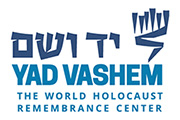Visual documentation is one of the major factors in shaping historical awareness of the Holocaust. Alongside archival documentation of the period’s events and the research on these records, visual documentation has contributed significantly towards knowledge of the Holocaust, influenced the manner in which it has been analyzed and understood, and affected the way it has been engraved in the collective memory. The camera, with its manipulative power, has tremendous impact and far-reaching influence. Although photography purports to reflect reality as it is, it is essentially an interpretation of it, since elements such as worldview, values, and moral perception influence the choice of the object to be photographed as well as how it is presented. When visual documentation is also used as a historical document, its use requires attributing the greatest of importance to these components. Different agencies photographed during the Holocaust. For the Nazi German regime, photography and film-making played a crucial role in propaganda as a means of expression and a tool for manipulating and mobilizing the masses. This kind of documentation attests to Nazi ideology and how German leaders sought to mold their image in the public eye. Conversely, Jewish photography was a component in the struggle for survival of the Jews imprisoned in the ghettos, and a manifestation of underground activity that testified to their desire to document and transmit information on the tragedy befalling their people. The Allied armies, who understood the informational value of photographing the camps they liberated, documented the scenes revealed to them, bringing in official photographers and encouraging soldiers to commemorate the Nazi horrors as evidence for future war crimes trials and in an effort to re-educate the German population. This exhibit presents a critical examination of documentation through the camera lens, focusing on the circumstances of the photograph and the worldview of the photographer, while referring to the Jewish photographers’ different and unique viewpoints as direct victims of the Holocaust.
